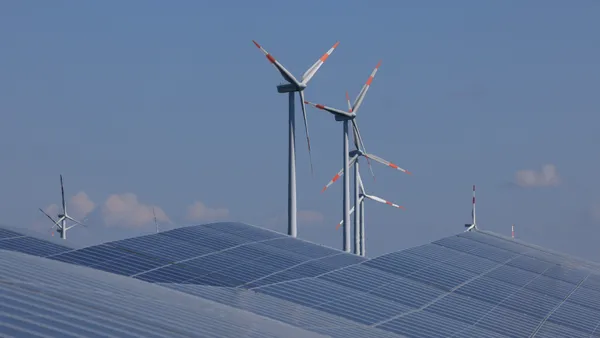Dive Brief:
- Hawaii Public Utilities Commission Chair Randy Iwase defended the PUC's controversial decision to terminate net energy metering (NEM) last week in an interview with Pacific Business News. The commission’s new plan is expected to cause significant disruption to the state’s solar industry.
- Regulators found that retail rate net metering, along with Hawaii’s high retail electricity prices and low installed solar costs, had led to unprecedented distributed energy resource (DER) penetrations. They ruled the retail rate credit for electricity sent to the state’s grid was no longer needed to drive growth.
- Iwase said the NEM program needed to be terminated and could have reasonably been ended sooner. The Alliance for Solar Choice (TASC), representing national solar installers, filed a lawsuit challenging the PUC decision and requesting an injunction to prevent the NEM termination.
Dive Insight:
Retail rate net metering has been history in Hawaii since Oct. 12, but the state's head regulator said in an interview last week that it could have been eliminated much sooner.
“We could’ve [ended it] as of September of last year, but we didn’t,” he told Pacific Business News. “The fair way is when the order came out.”
New solar systems will be interconnected under either the commission’s “self-supply” option or “grid supply” option. Installations approved before the decision date will have NEM’s retail rate credits for the life of their agreements.
The grid-supply option replaces NEM with a new credit of $0.151/kWh for Oahu, $0.154/kWh for Hawaii, and $0.172/kWh for Maui. The credits are derived from the avoided cost of fossil fuel during peak generation hours measured from July 2014 to June 2015.
The self-supply option is primarily aimed at creating solar owners who do not export generation to the grid, though the commission stressed no non-export design should prevent solar systems from providing grid support.
The self-supply tariff allows system owners to earn retail rate credit in the form of reduced bills for generation that aligns with their energy demand patterns. Utilities are required to manage the self-supply option and provide streamlined interconnection standards for customers who choose it.
The TASC lawsuit alleges the PUC went beyond its authority and, in doing so, violated state and federal law and constitutional due process dictates. Iwase said they should have seen the writing on the wall.
“Everyone was involved in this docket, who are intervenors,” he said. “They saw all of the motions and memos that came in. Everyone should have been aware, that the positions taken by the parties, there had to be some changes to NEM. There had to be an evolution of the program.”














